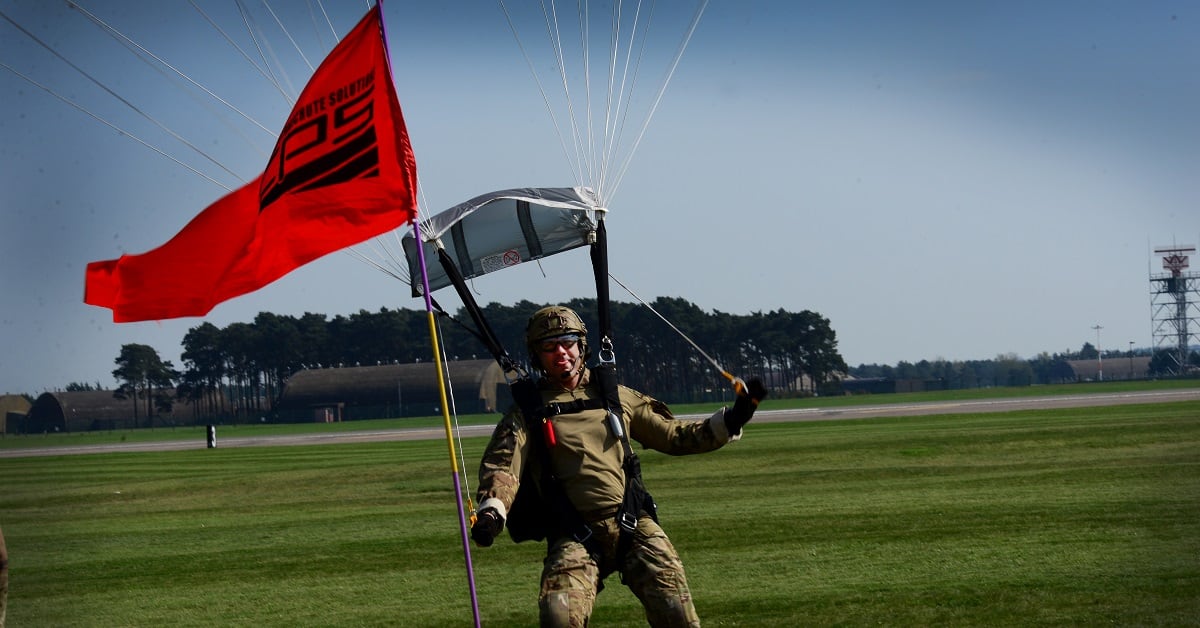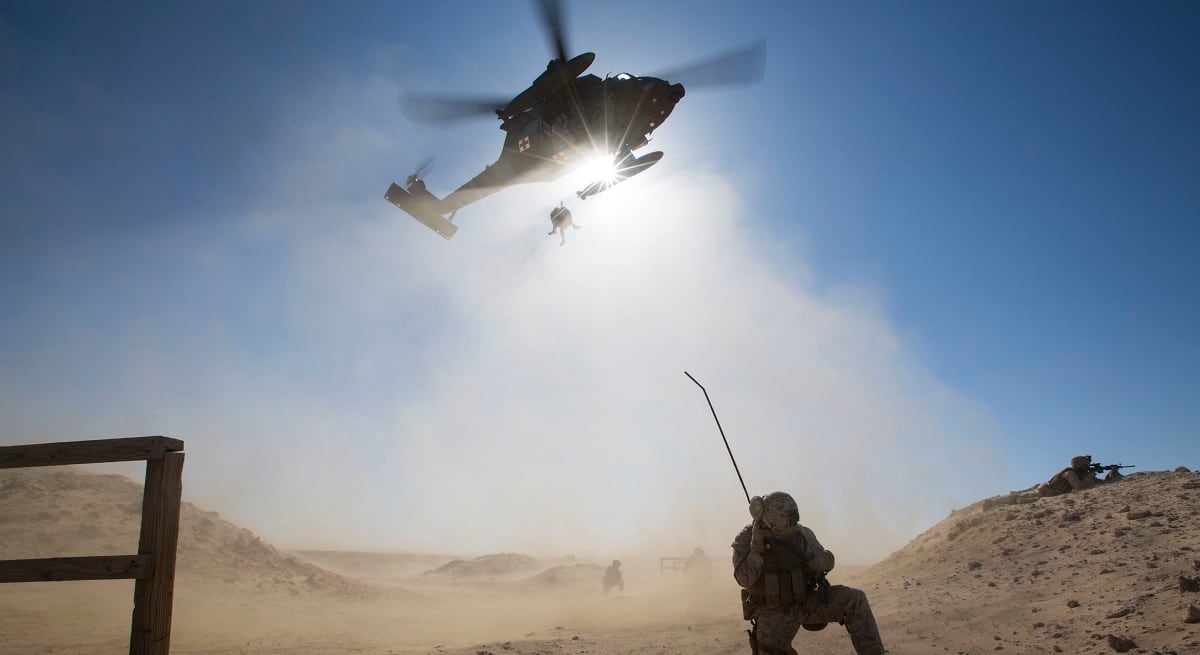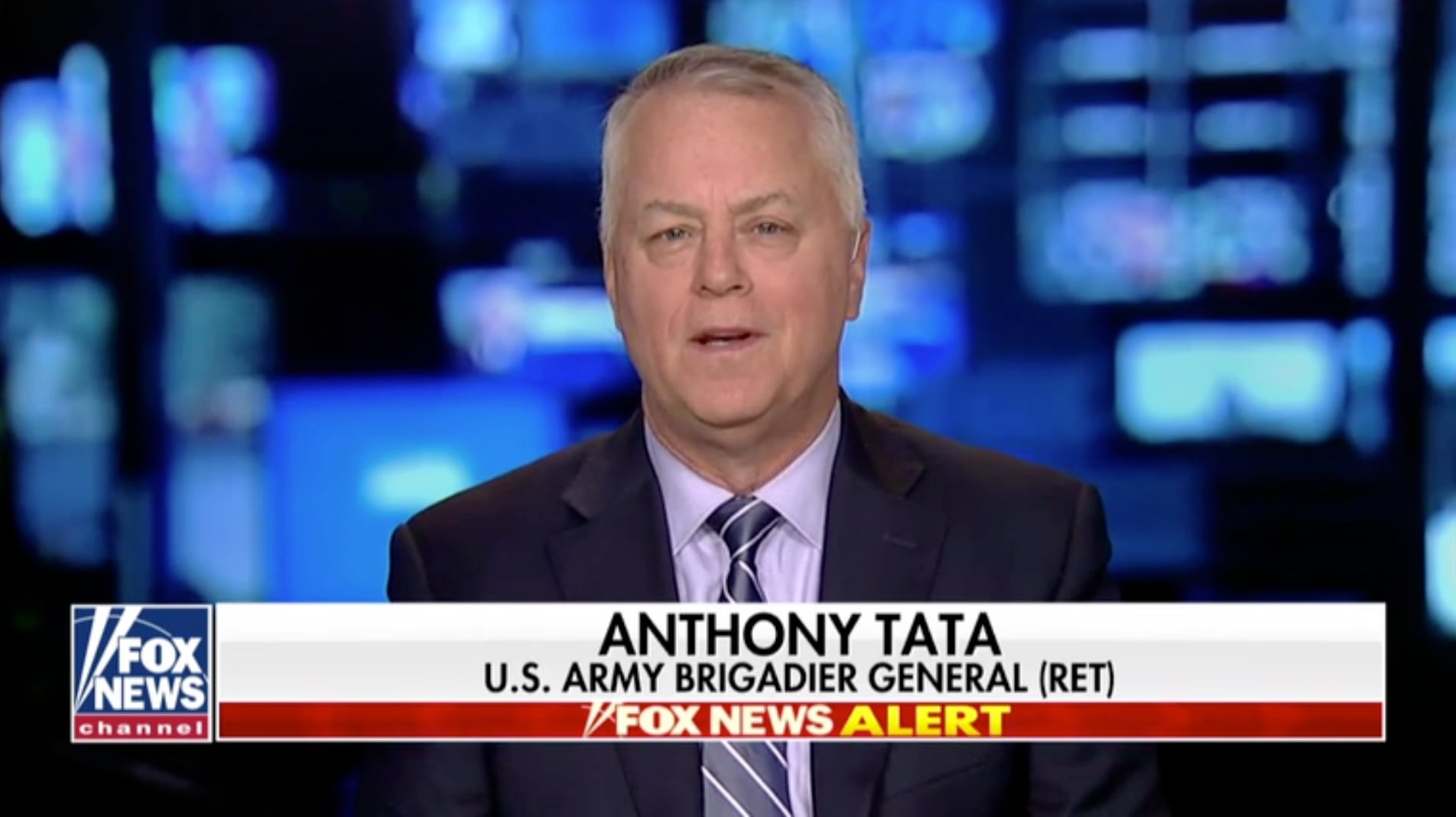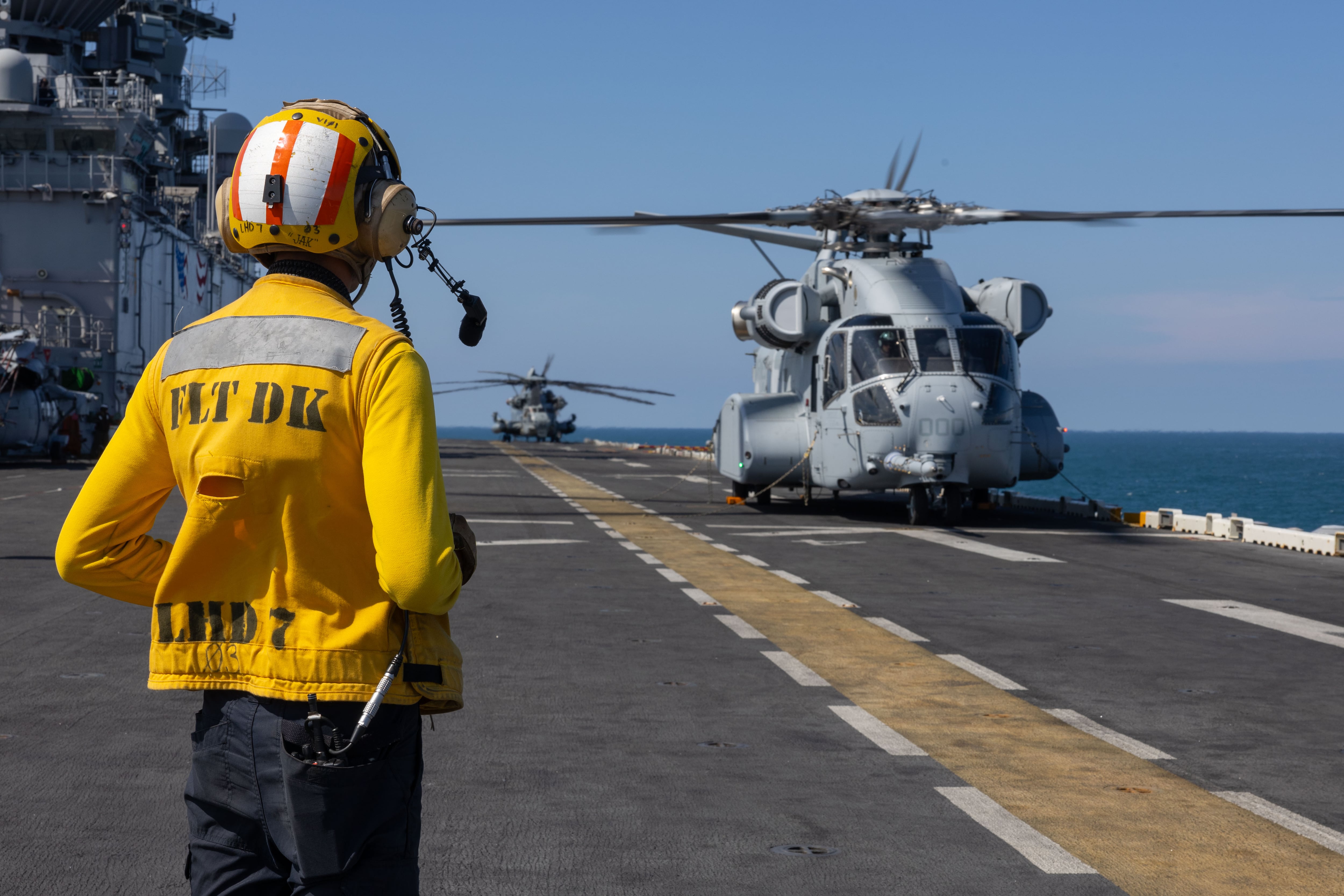On April 20, Air Force pararescue airmen conducted their final jump over Royal Air Force Lakenheath, England, before their units — the 56th and 57th Rescue Squadrons — permanently moved to Aviano Air Base, Italy.
That move went ahead on May 15, as the rescue units’ HH-60G Pave Hawks conducted a final flight during a farewell ceremony at the Lakenheath flightline.
Air Force officials said they are relocating the two rescue squadrons to Aviano to provide strategic combat search and rescue capabilities to the European and African theaters of operation, as well as to supplement training opportunities for partners and allies in the region.
Both rescue squadrons are comprised of specialized airmen, “dedicated to conducting personnel recovery across the full-range of military contingencies during all phases of joint, coalition and combined operations around the globe,” according to an RAF Lakenheath press release.

The two squadrons have spent the past several months gradually transitioning their five Pave Hawks and nearly 350 personnel to the new duty station — a move that was first announced in November 2015.
“We’ve worked hard across both squadrons to ensure a smooth transition to Aviano Air Base,” said Maj. Seth Davis, 57th Rescue Squadron commander. “We’re sad to be leaving but are incredibly proud of the work we’ve done while located at RAF Lakenheath and are excited about the squadrons’ new home in Italy.”
The move is expected to be completed at the end of June. Even during the transition, though, the rescue units will continue to provide on-call rescue operations.
In their new location, the rescue squadrons will have greater access to emerging hotspots on the African continent, as well as the Middle East. The units reinforce a critical part of U.S. military doctrine — the so-called “golden hour.”
RELATED

The moniker describes a policy set by then-Secretary of Defense Robert Gates in 2009 to promise medical assets to troops within the critical first 60 minutes of being wounded in action.
“This marks the end of an era for the 56th and 57th Rescue Squadrons,” said Lt. Col. Leslie Semrau, 56th Rescue Squadron commander.
According to RAF Lakenheath, the 56th moved to the English base in 2006 from Keflavik, Iceland. The 57th came much later, in 2015. “But no matter where we’re located, we remain ready to deliver combat search and rescue capabilities wherever and whenever they’re needed,” Semrau said.
With U.S. forces engaged in action across multiple countries, from Niger to Afghanistan, more medical assets, closer to the action, could prove critical.
Kyle Rempfer was an editor and reporter who has covered combat operations, criminal cases, foreign military assistance and training accidents. Before entering journalism, Kyle served in U.S. Air Force Special Tactics and deployed in 2014 to Paktika Province, Afghanistan, and Baghdad, Iraq.





